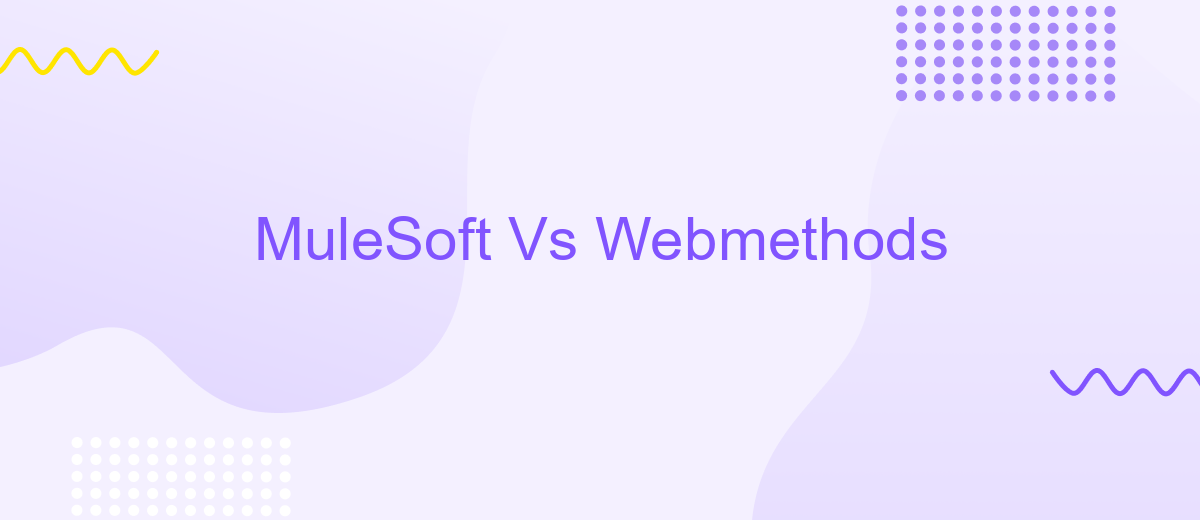MuleSoft Vs Webmethods
When it comes to integration platforms, MuleSoft and Webmethods are two of the leading contenders. Both offer robust solutions for connecting applications, data, and devices, but they come with distinct features and capabilities. This article aims to compare MuleSoft and Webmethods, highlighting their strengths and weaknesses to help you make an informed decision for your business needs.
Introduction
In the rapidly evolving landscape of enterprise integration, choosing the right platform is crucial for seamless data flow and operational efficiency. MuleSoft and Webmethods are two prominent contenders in this space, each offering unique features and capabilities. Understanding their differences and strengths can help businesses make informed decisions.
- MuleSoft: Known for its robust API-led connectivity and Anypoint Platform, MuleSoft excels in creating and managing APIs and integrations.
- Webmethods: A comprehensive integration suite by Software AG, Webmethods offers tools for application integration, business process management, and B2B integration.
- ApiX-Drive: An emerging service that simplifies the integration process with its no-code platform, making it accessible for businesses of all sizes.
Both MuleSoft and Webmethods have their own set of advantages and are tailored to meet different business needs. By comparing these platforms, organizations can better understand which solution aligns with their integration requirements and strategic goals.
Features Comparison

MuleSoft offers a robust platform with features such as API-led connectivity, which allows for seamless integration across various systems and applications. It provides a user-friendly interface with drag-and-drop capabilities, making it easier for developers to design and implement integrations. Additionally, MuleSoft supports a wide range of connectors and pre-built templates, which expedite the integration process and reduce development time.
Webmethods, on the other hand, excels in providing a comprehensive suite of integration tools that include business process management, B2B integration, and API management. Its strong emphasis on scalability and performance makes it suitable for large enterprises with complex integration needs. Webmethods also offers advanced analytics and monitoring tools, enabling businesses to gain insights and optimize their integration workflows. For those looking to streamline their integration efforts further, services like ApiX-Drive can be considered, as they provide additional automation and integration capabilities, enhancing the overall efficiency of both platforms.
Pricing and Licensing

When evaluating MuleSoft and Webmethods, pricing and licensing are critical factors to consider. Both platforms offer flexible pricing models tailored to different business needs, but they do have distinct differences.
- MuleSoft: MuleSoft offers a subscription-based pricing model. The cost is typically based on the number of cores or vCores used, with additional fees for premium connectors and support. MuleSoft also provides a free trial to help businesses evaluate its capabilities.
- Webmethods: Webmethods follows a similar subscription model but often includes a more complex licensing structure. Costs can be based on the number of users, integration processes, and additional modules required. Webmethods also offers a free trial period.
Both platforms require careful consideration of your specific integration needs and budget. For businesses looking to streamline integration without extensive upfront costs, tools like ApiX-Drive can be beneficial. ApiX-Drive offers a more straightforward pricing model and enables easy setup of integrations, making it a cost-effective alternative for simpler use cases.
Case Studies and Success Stories

Both MuleSoft and Webmethods have proven their capabilities through numerous successful implementations across various industries. Companies have leveraged these platforms to streamline their operations, enhance connectivity, and drive digital transformation.
For instance, a leading retail chain utilized MuleSoft to integrate its e-commerce platform with multiple third-party services, resulting in a seamless customer experience and a 20% increase in online sales. Similarly, a global financial institution employed Webmethods to synchronize its disparate systems, achieving real-time data flow and significantly reducing operational costs.
- A healthcare provider used MuleSoft to integrate patient data across different systems, improving care coordination and patient outcomes.
- A manufacturing company implemented Webmethods for supply chain integration, leading to a 15% reduction in inventory costs.
- ApiX-Drive enabled a mid-sized enterprise to automate data transfers between CRM and marketing tools, enhancing lead management and conversion rates.
These case studies highlight the versatility and effectiveness of MuleSoft and Webmethods in addressing complex integration challenges. By choosing the right platform, businesses can achieve significant improvements in efficiency, data management, and overall performance.
Conclusion
In conclusion, both MuleSoft and Webmethods offer robust solutions for integration needs, each with its own strengths and weaknesses. MuleSoft excels in providing a user-friendly platform with extensive API management capabilities, making it a strong choice for organizations looking to streamline their API lifecycle management. On the other hand, Webmethods offers a comprehensive suite of tools that cater to complex integration scenarios and enterprise-level requirements, making it ideal for large-scale operations.
Ultimately, the choice between MuleSoft and Webmethods will depend on your specific business needs and integration requirements. For those looking to simplify the integration process further, services like ApiX-Drive can be invaluable. ApiX-Drive provides an easy-to-use interface for connecting various applications and automating workflows, thereby enhancing the efficiency of your integration efforts. By carefully evaluating your needs and leveraging the right tools, you can ensure a seamless and effective integration strategy.


FAQ
What are the main differences between MuleSoft and Webmethods?
Which platform is more suitable for cloud integration?
How do MuleSoft and Webmethods handle API management?
What are the cost considerations when choosing between MuleSoft and Webmethods?
Is there a service that can help with automation and integration setup for these platforms?
Apix-Drive will help optimize business processes, save you from a lot of routine tasks and unnecessary costs for automation, attracting additional specialists. Try setting up a free test connection with ApiX-Drive and see for yourself. Now you have to think about where to invest the freed time and money!

